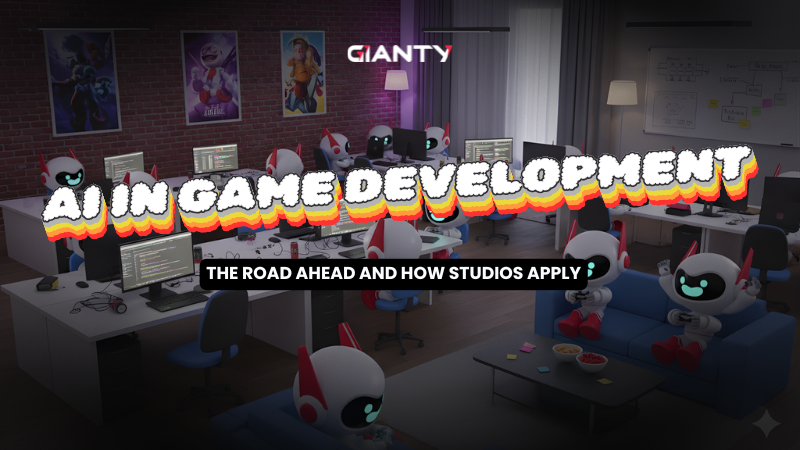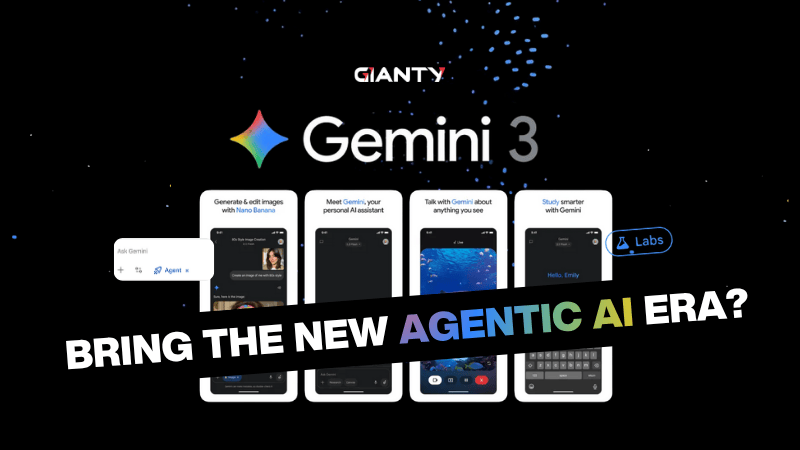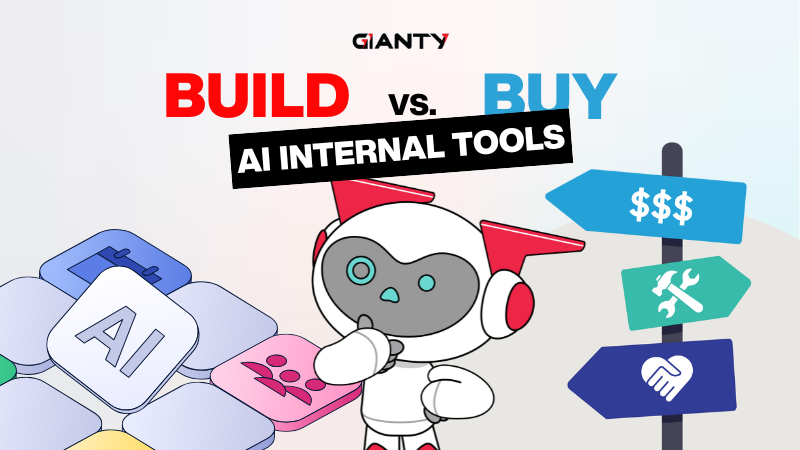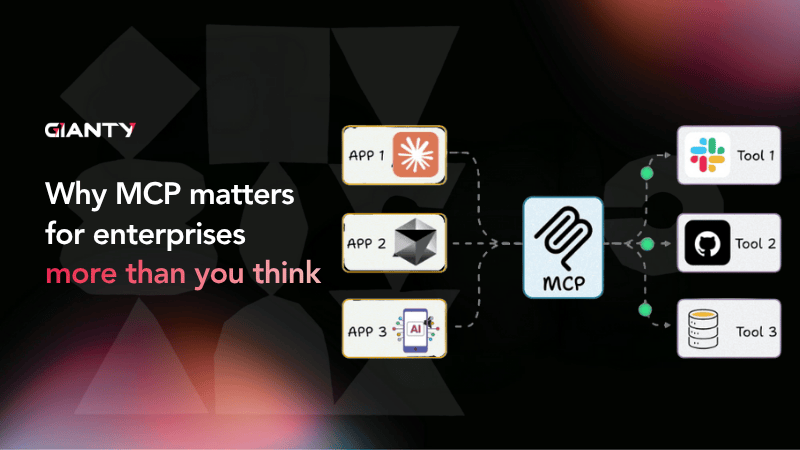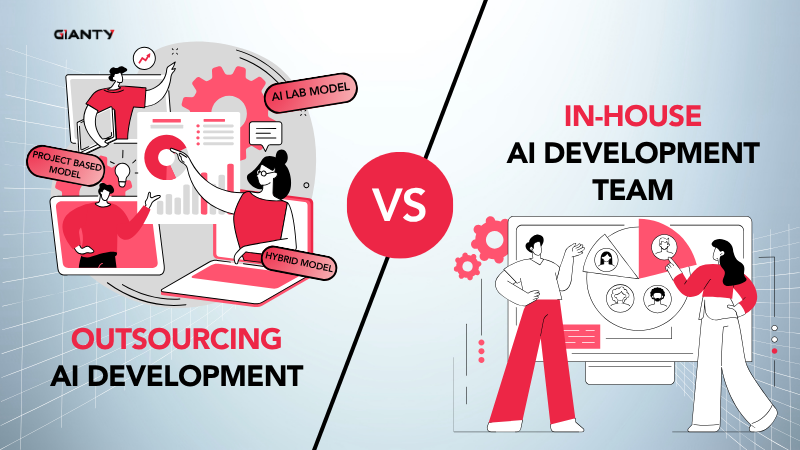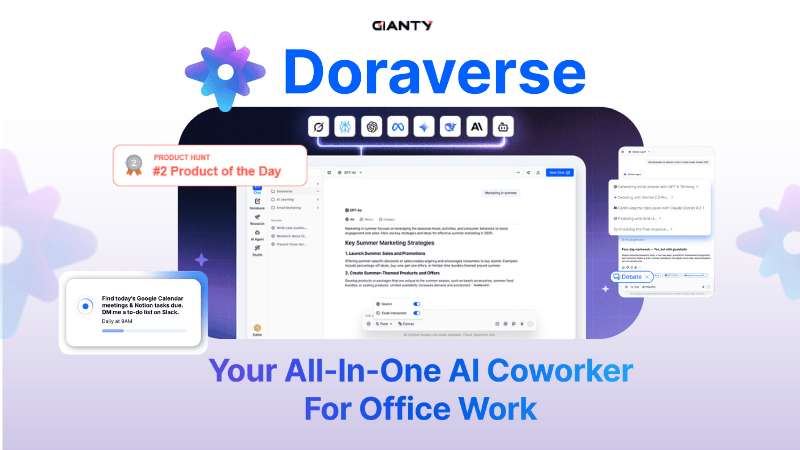AI automation is everywhere. From headlines promising 10x productivity to internal dashboards tracking how many tasks were “automated” last week, the promise is hard to ignore. But there’s a growing disconnect between promise and performance. Many companies adopt AI tools hoping to drive efficiency, only to see disappointing results -or worse, no meaningful ROI at all. The reason? Most are focusing on tools, not outcomes.
This article explores what high ROI AI automation looks like, how to identify where it can drive the biggest gains, and how companies like GIANTY help turn AI hype into sustainable business transformation.
Why AI Automation Doesn’t Always Work in Your Business?
The Hype of AI Automation vs. Reality
The pace of AI development has been staggering. GPT-4o, Claude, and other advanced models now process text, images, and logic at speeds and comprehension levels unimaginable even two years ago. Low-code platforms like Zapier, Make, and n8n let businesses connect these AI engines with internal tools in minutes.
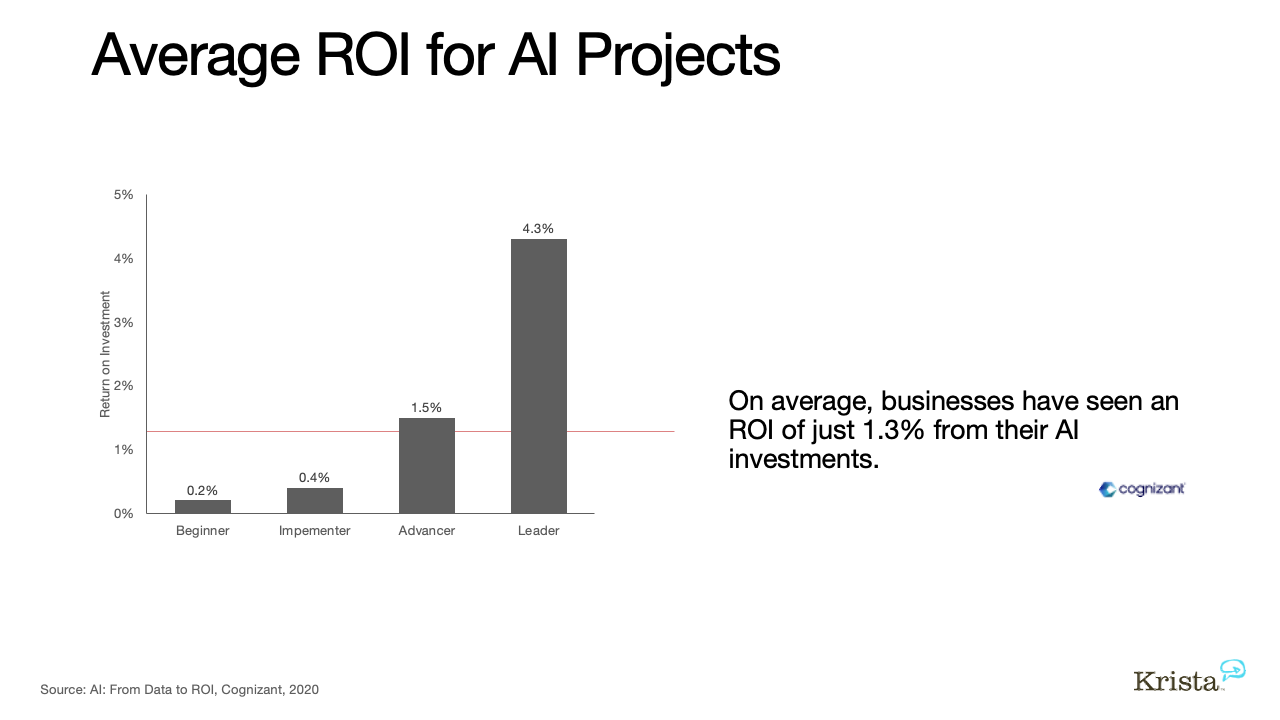
And yet, many businesses remain stuck. Why? Because technology isn’t a strategy. There’s a difference between “nice to solve” and “need to solve.”
Implementing AI or automation tools without a clear business case is like hiring a new team without assigning them to work. In fact, a 2022 report by Gartner found that only 54% of AI projects make it from prototype to production, and of those, less than half deliver significant business value.
Common Mistakes
Much of the failure can be traced to common mistakes:
- Undefined AI ROI goals: Projects begin with “let’s automate something” rather than “let’s solve this specific bottleneck.”
- Automating low-value tasks: Processes that occur infrequently or aren’t business-critical don’t yield noticeable returns – even if automated perfectly.
- Tool-first thinking: Choosing ChatGPT, Zapier, or another platform before identifying the actual business problem leads to misalignment and underutilization.
Just because something is automated doesn’t mean it’s valuable. If the original task didn’t matter much, automating it won’t help much either. To break this cycle, businesses must reverse the approach. Don’t start with tech only, let’s start with impact.
What Defines High-ROI AI Automation?
High-ROI AI automation means applying automation where it truly improves business performance in measurable ways – whether through revenue acceleration, cost reduction, time savings, or operational resilience.

According to LinkedIn’s 2024 B2B Marketing Benchmark for India, a staggering 94% of B2B marketers confirmed that AI is already helping them achieve a strong return on investment, particularly in areas like campaign performance, lead scoring, and content production.
This isn’t theoretical – it’s a clear signal that when used intentionally, AI automation can unlock real business value. But what does “ROI” from AI automation actually look like?
At a functional level, AI ROI is reflected in quantifiable improvements such as:
- Revenue growth: By shortening sales cycles, improving lead quality, or increasing throughput in sales pipelines.
- Operational efficiency: Automating repetitive tasks frees up human resources for higher-order strategic work.
- Error reduction: Especially in finance or compliance-heavy processes, AI systems reduce costly manual mistakes.
- Faster process execution: Whether it’s approving invoices, routing support tickets, or onboarding employees, automation accelerates workflows that typically lag.
- Customer satisfaction: Faster, more personalized service—often powered by AI assistants – translates directly to improved experience.
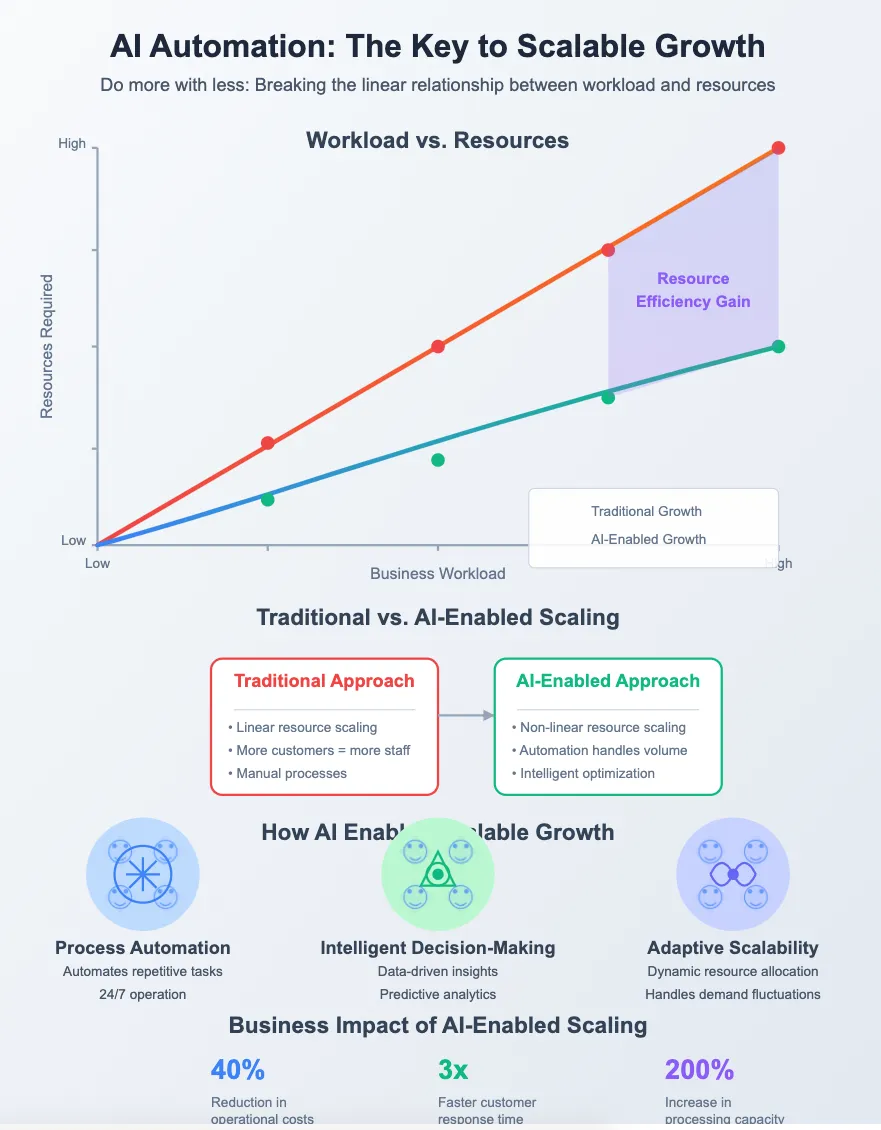
This is the real edge of AI automation – it enables scaling without scaling costs. You don’t need to double your headcount to double output.
How to Find High-ROI AI Automation Opportunities in Your Business
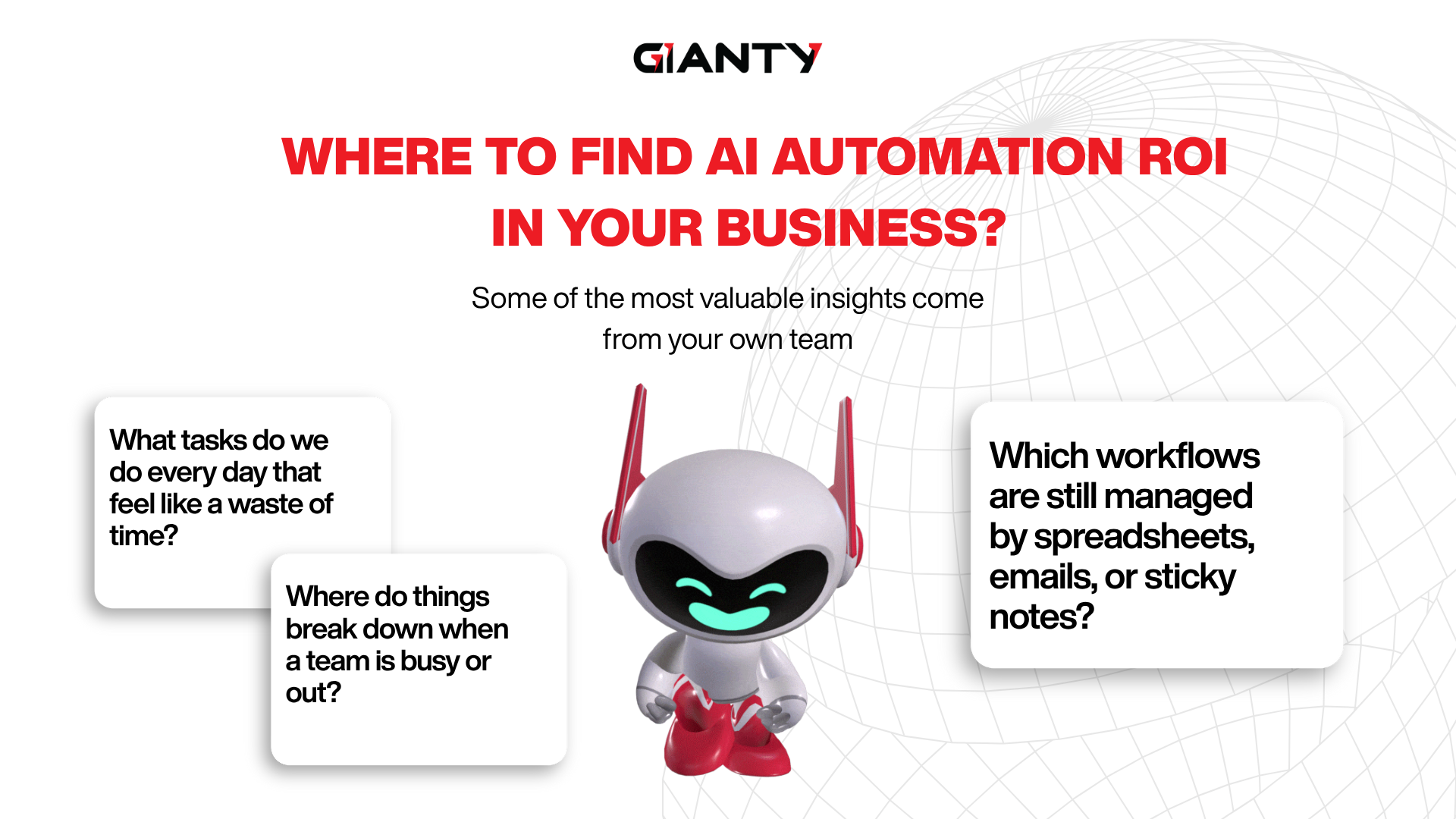
You don’t need a six-month audit to identify these. You just need to ask the right questions and look in the right places. Dig into your internal data for signals:
- Time tracking tools can reveal where hours are spent.
- Email or chat logs can show repeated questions or handoffs.
- Support tickets often follow consistent patterns that are ideal for automation.
- Finance and HR processes, like invoice approvals or onboarding flows, are often overengineered and under-optimized.
A task is a strong candidate for AI automation if it’s done often, follows clear logic, spans multiple steps or tools, and becomes costly or error-prone as it scales.
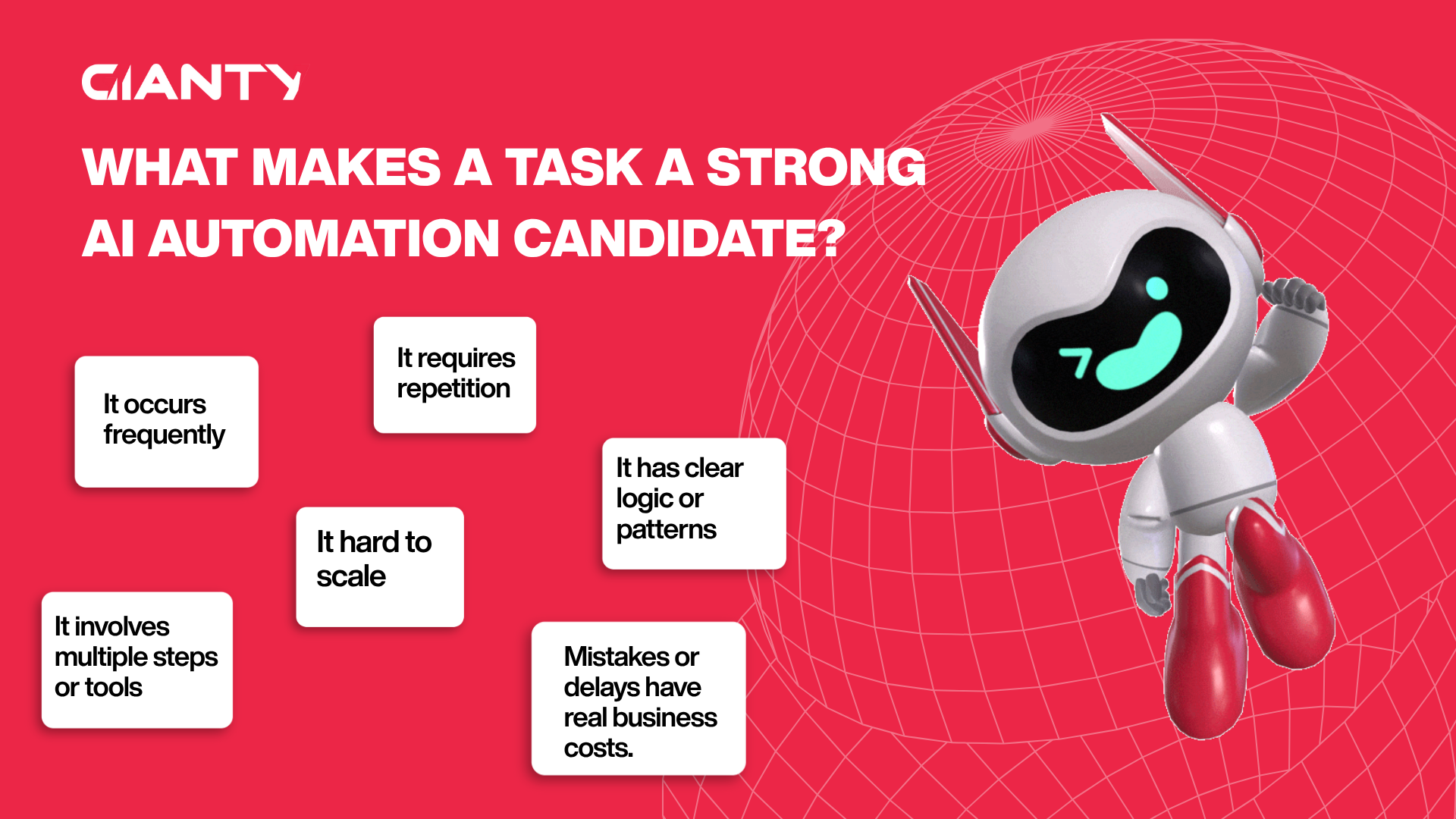
At GIANTY, this discovery process is the foundation of every AI engagement. Our consulting team works with clients to map workflows, assess automation value, and prioritize initiatives based on ROI, not trendiness.
Use this table to assess potential workflows:
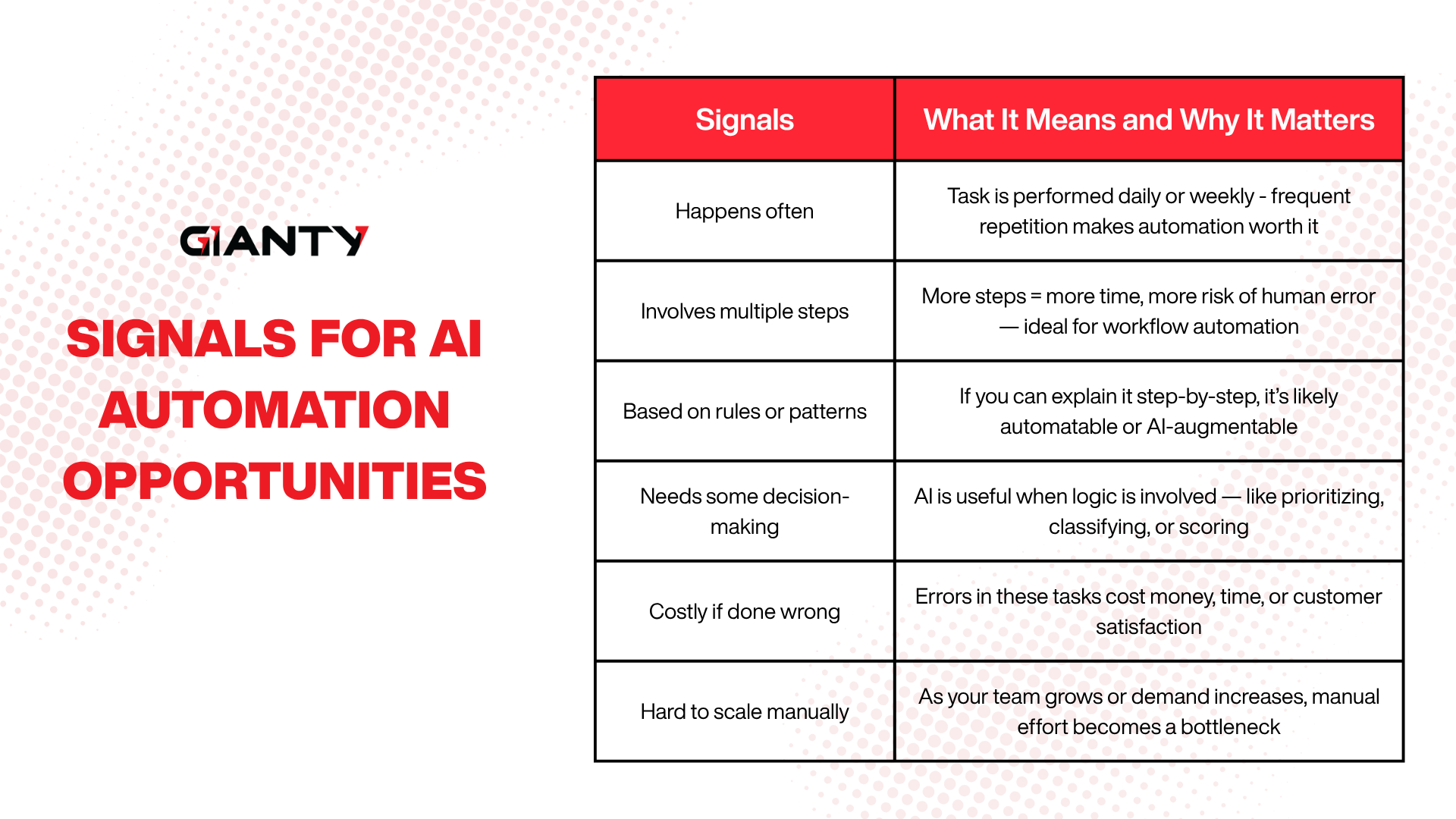
Real Use Cases of High-Impact AI Automation that bring AI ROI
While AI automation may still sound abstract to some teams, its impact becomes clear when tied to specific, day-to-day business processes. Below are real-world examples where AI-driven automation is not only delivering value but transforming how teams operate, make decisions, and serve customers.
1. Lead Scoring and Sales Routing
In many businesses, especially those with high lead volumes, sales reps waste time chasing low-quality leads or responding too slowly to high-intent prospects. AI changes this by evaluating incoming leads based on behavioral data, form submissions, demographics, and past interactions.
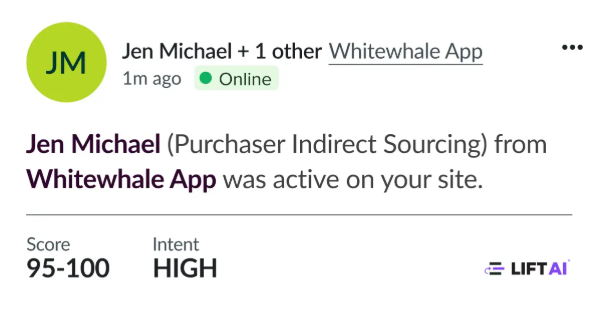
Why it drives ROI: It maximizes your sales team’s attention on leads that matter most, improves response times, and increases close rates. You’re not just reducing workload – you’re increasing pipeline efficiency and revenue per rep.
2. Customer Support Ticket Triage and Assignment
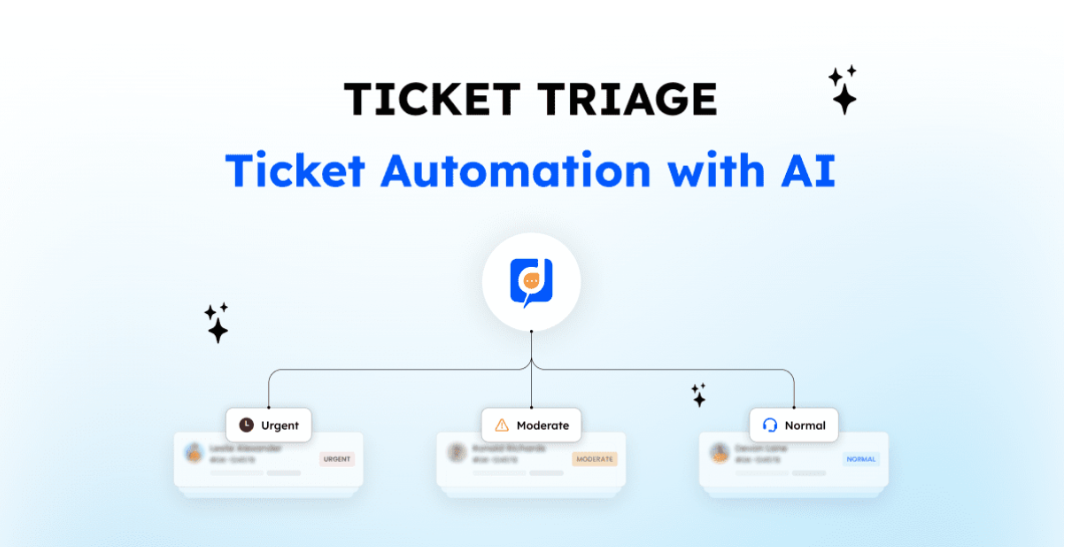
Support centers often face delays not because of slow agents, but because of manual ticket routing and triage. AI solves this by automatically classifying incoming tickets by topic (e.g., billing, technical issue), urgency, and customer segment.
Why it drives ROI: This cuts down first-response times, reduces agent fatigue, and improves customer satisfaction scores.
3. Invoice Data Extraction and Processing
Manual invoice handling is one of the most time-consuming tasks in finance departments. AI can read PDF or scanned invoices, extract key fields like vendor name, amount, and due date, and validate the data. Automation then pushes this into your accounting system.
Why it drives ROI: It eliminates human errors, shortens payment cycles, and frees finance teams from tedious data entry. This directly improves cash flow and compliance readiness.
Uncover more real-world examples of GIANTY’s creative and technical expertise:
4. Internal Knowledge Access via AI Assistants
Operations teams often get bogged down with repeated internal questions – how to request time off, where to find the latest brand guidelines, and how to set up a new account. An AI-powered assistant can search through internal documents, SOPs, and FAQs, delivering instant answers via Slack, Microsoft Teams, or internal portals.
Why it drives ROI: It dramatically reduces interruptions to your operations or HR team, while ensuring employees get accurate, consistent answers. Over time, this creates a self-service culture that scales.
5. Social Content Generation and Scheduling
Marketing teams often struggle with bandwidth. AI content tools can now repurpose blogs, product updates, and FAQs into social-ready posts. Paired with automation, those posts are scheduled and published across platforms.
Why it drives ROI: You increase content velocity and brand presence without increasing team size. It also enables more consistent posting, which is key to long-term engagement and SEO.
Take a closer look at more more in-depth case studies powered by GIANTY:
Mistakes to Avoid If You Want AI Automation That Actually Delivers ROI
AI automation can be powerful but when applied without direction, it becomes expensive noise. Many businesses fall into the trap of automating the wrong things or jumping into tools too quickly. Signs of Low ROI
- Automating one-off or rarely used flows won’t justify the effort or cost.
- Tool obsession: Building AI features just because they are trendy before understanding the problem leads to misaligned efforts.
- No scalability: If the process can’t grow with your business, the value is limited.
- Overengineering: If the system takes more effort to maintain than doing the task manually, it’s not worth it.
Without a strategy, automation becomes productivity theater- lots of motion, little impact. The best systems don’t just check a tech box; they reduce friction, speed up results, and scale with your team.
At GIANTY, we combine strategic thinking with technical execution. Our clients don’t just get automation – they get AI solutions designed around business outcomes. We build with ROI in mind, not just code.
Steps to Diagnose Automation Opportunities
At GIANTY, we always start with a discovery phase, working closely with teams to pinpoint what matters. You can begin this process inside your own organization using a few simple steps:
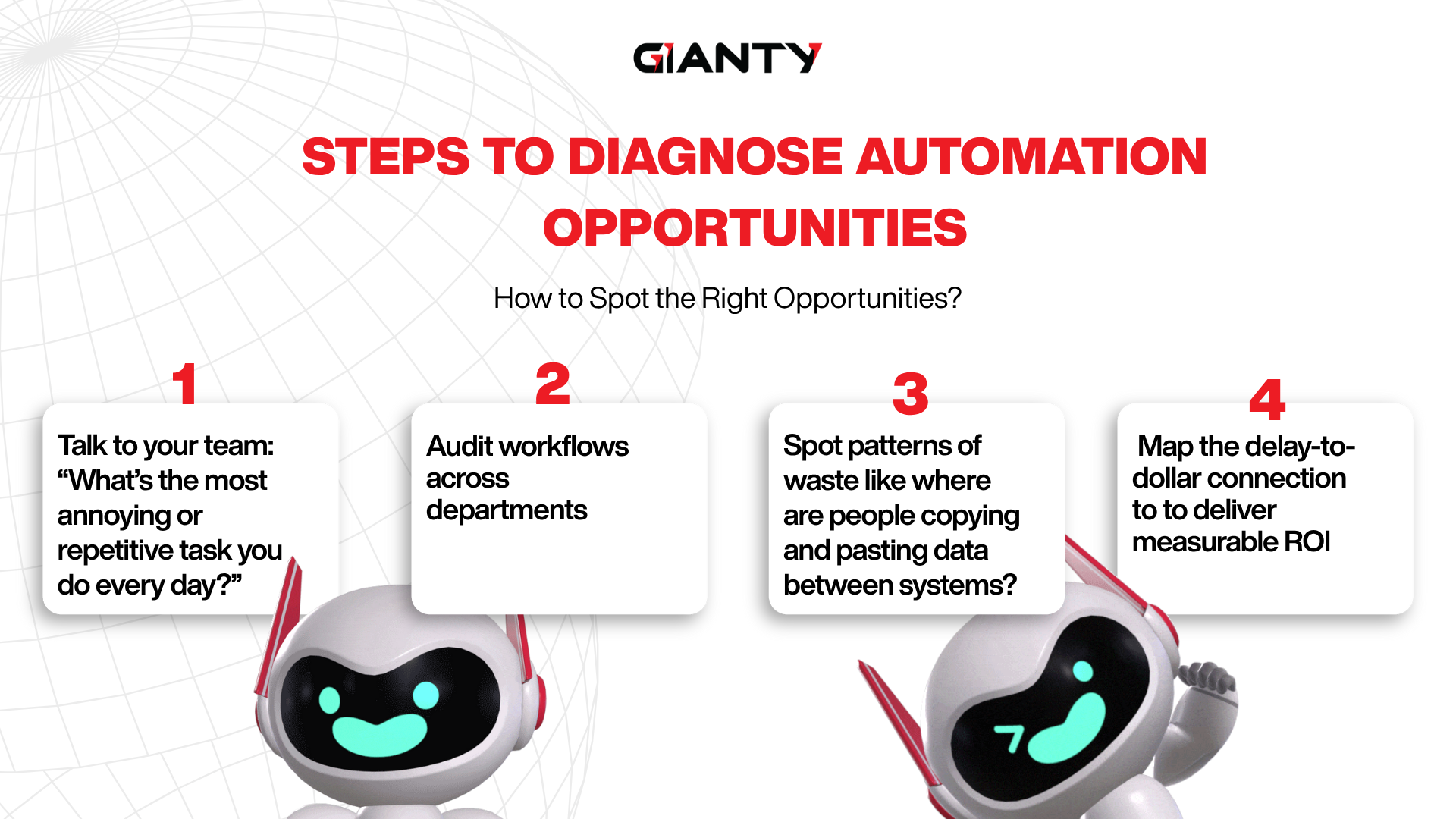
Once you’ve identified the right problem, the automation design becomes simple – and more effective. AI automation should solve real business pain – not just check a tech trend box. Start by understanding the process and pain points.
- Use AI where human decision-making or interpretation is involved. This includes reading unstructured text, classifying content, detecting patterns, analyzing sentiment, or summarizing information.
- Use automation where action is needed: triggering workflows, routing messages, updating systems, syncing data, or notifying people.
This hybrid model: AI for thinking, automation for doing – is how we build high-impact workflows.
GIANTY’s View: Automation Only Works When ROI Leads
At GIANTY, we view AI automation as more than just digital transformation—it’s a business model upgrade. Our team doesn’t just plug in tools. We begin by mapping out the real costs of inefficiencies in your workflows and then design solutions that yield measurable returns. That’s why our approach starts with discovery and consulting, not tool selection.
We focus on high-value use cases that:
- Save hundreds of hours working manually, not just a few minutes.
- Increase conversion rates or margins, not just convenience.
- Improve team bandwidth, not just check a tech trend box.
Whether it’s automating your invoice pipeline with AI-based data extraction, routing leads in real-time based on predicted quality, or orchestrating multi-step workflows across Slack, CRM, and email – we align automation with ROI from day one.
From strategy to execution, GIANTY helps you turn AI into a real, lasting impact. Let’s build smarter workflows that deliver real ROI with us now.



